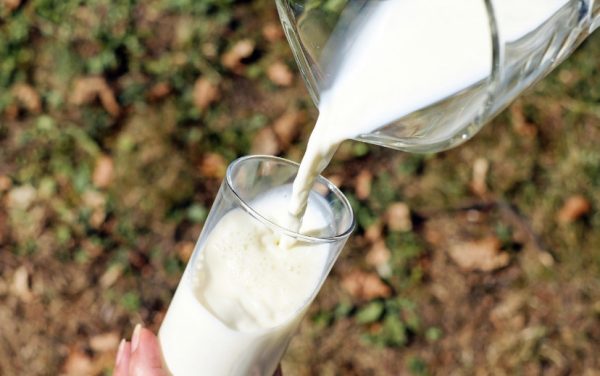You may never drink a shamrock shake again
Do you really know what you’re drinking?
Brennan Dimiceli (Sr) examines his shamrock shake, wondering if the taste is worth the risky ingredients
March 3, 2020
As St. Patrick’s day approaches, McDonald’s seasonal Shamrock Shake is becoming more and more popular once again. The shake was originally introduced in the 1970s, briefly discontinued in the 90s and reintroduced in the early 2000s. For the last couple of years, the shake was so popular that McDonald’s has extended the “Shamrock Shake” season by about two weeks after St. Patrick’s Day. But like the majority of the McDonald’s menu, not many fans have looked deeply into what the shake is made out of.
The base of the shake is classic vanilla soft serve. The ingredients include “Milk ingredients, sugar, modified milk ingredients, glucose, mono and diglycerides, guar gum, dextrose, carrageenan, cellulose gum, natural flavour, sodium hydroxide, sodium carbonate,” according to McDonald’s own menu. Dextrose is a simple sugar that is often used in medicine prescribed to those with low blood sugar and dehydration. If you don’t suffer from these conditions, the ingredient can prompt extremely high blood sugar and the buildup of liquid in the body, which can lead to more serious medical conditions.
The minty flavor is a result of the Shamrock Shake syrup. The syrup consists of “High Fructose Corn Syrup, Corn Syrup, Water, Sugar, Natural Flavor, Xanthan Gum, Citric Acid, Sodium Benzoate (Preservative), Yellow 5, Blue 1,” again according to their menu. High fructose corn syrup is a very popular artificial sugar made from corn. It is linked to obesity, diabetes, fatty liver disease, and increases the risk of heart disease and cancer. Sodium benzoate is a combination of benzoic acid and sodium hydroxide. It is commonly used in packaged foods and drinks to extend the shelflife. Although the consumption of sodium benzoate has been linked to obesity, ADHD and oxidative stress, it has been deemed a safe ingredient. Similar to Red40, Yellow5 has also been accused of causing cancer.
Light whipped cream is an optional additive. The McDonald’s menu reads that their whip cream is made out of “Cream, Nonfat Milk, Liquid Sugar, Contains 2% or Less: Mono and Diglycerides, Natural Flavors, Carrageenan.Whipping Propellant (Nitrous Oxide).” Mono- and diglycerides are made out of animal fats and vegetable oils. They are considered an emulsifier, which is the only reason the ingredient has not been banned by the FDA. While there is not enough evidence for nutritionists to advise against the consumption of emulsifiers, they have been shown to break down the lining of intestines.
And it wouldn’t be a Shamrock Shake without a maraschino cherry. These cherries are marinated in a combination of sulfur dioxide and calcium chloride, which is used to dye the cherry completely white. It is then soaked in Red40, a food dye that has been linked to cancer and learning impairments in children. The final step is marinating the cherries in high fructose corn syrup for upwards of one month.
Nutritionists recommend 2,000-2,500 calories per day (all nutrition varies depending on size and gender). A medium shamrock shake is 560 calories and contains none of the iron, fiber, or monounsaturated fat crucial to your diet. The shake does, however, include 16 grams of total fat, 91 grams of carbohydrates, 65 mg of cholesterol, 190 mg of sodium and 78 grams of sugar. The average adult should be consuming roughly 30 grams of sugar per day and they are meant to be provided by fruits.
Perhaps, besides taste, the one redeemable quality of the shake is the 12 grams of protein it provides.










